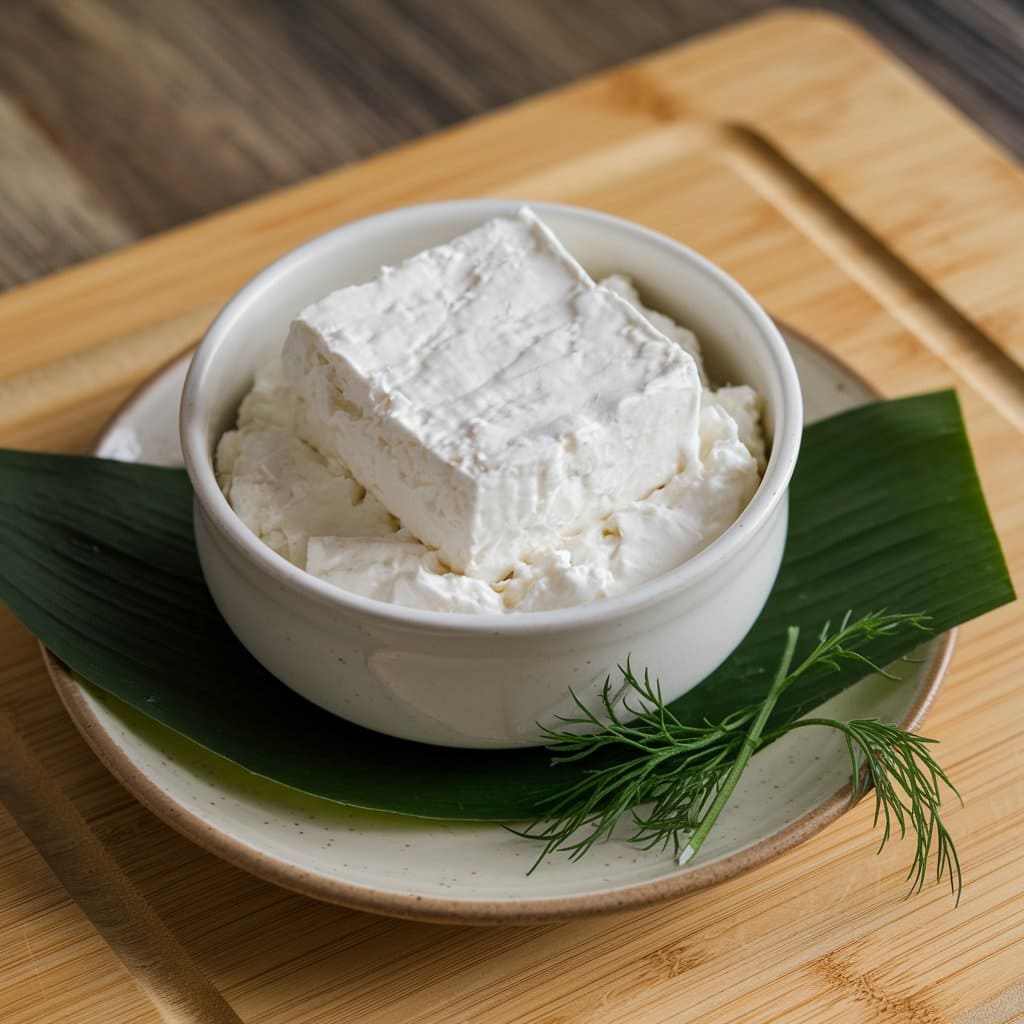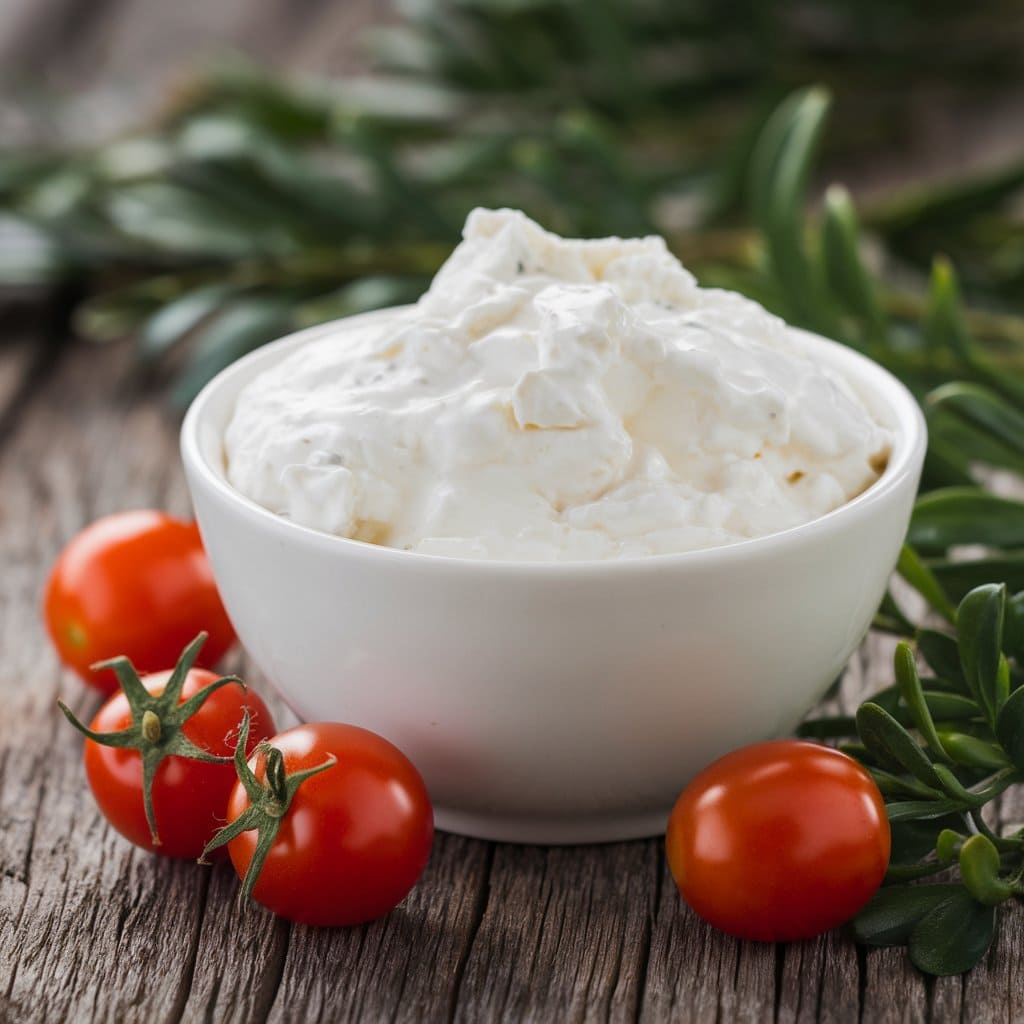In recent years, interest in Cottage Cheese Homemade options has grown exponentially. People are craving fresh, wholesome alternatives to store-bought varieties, and crafting your Homemade cottage cheese is a rewarding endeavor that offers both versatility and nutrition. Whether you’re a seasoned home cook or someone dipping your toes into cheesemaking for the first time, this detailed guide will help you master the art of cottage cheese recipe creation. By the end of this article, you’ll know how to make cottage cheese from scratch, with tips to tailor the outcome precisely to your liking. After all, an easy cottage cheese recipe needn’t be intimidating, and once you’ve tried your first batch, you may never return to the store-bought version.

Table of Contents
Why You’ll Love Cottage Cheese Homemade
Making Cottage Cheese Homemade is more than just a culinary exercise—it’s a gateway to greater control over your food’s quality, freshness, and flavor. In this section, we’ll explore why crafting this delightful dairy staple is well worth the effort.
Perfect for Families, Quick, and Delicious
One of the most excellent perks of an easy cottage cheese recipe is its accessibility. Even those without extensive kitchen experience can make it successfully. You don’t need specialized cheesemaking equipment or fancy ingredients—just milk, an acid (like vinegar or lemon juice), and a few standard kitchen tools. Because the process is straightforward, families can tackle it together, making it a fun weekend project for kids who love to see the milk transform. Plus, homemade cottage cheese can be used in various dishes, from breakfast spreads to dinnertime casseroles, so everyone in the house can enjoy a wholesome, creamy addition to their meals.
Nutritional Benefits and Simple Ingredients
For those who enjoy dairy but also care about nutritional profiles, making Homemade cottage cheese allows you to control factors like fat content, salt levels, and additives. Traditional store-bought versions can contain stabilizers or preservatives that may not align with your dietary preferences. At home, you get to decide exactly what goes in. Cottage cheese is naturally rich in protein, calcium, and essential amino acids—perfect for fueling busy mornings or post-workout meals. Using fresh milk and minimal processing, you’ll enjoy a product as close to nature as possible.
Flexibility (Adaptable, Budget-Friendly, etc.)
Another advantage is the recipe’s adaptability to personal tastes and budgets. Whether you prefer whole milk for a richer texture or a lower-fat option for a lighter outcome, the choice is yours. If you’re in an area with limited grocery options or simply trying to manage expenses, making cottage cheese can be more cost-effective in the long run. Additionally, if you have surplus milk close to its expiration date, turning it into cottage cheese is a delicious way to prevent waste.
Essential Ingredients for the Recipe
Understanding your ingredients is a significant part of learning how to make cottage cheese. Below, we’ll break down the main components, their roles, and how you can tweak them to meet specific needs.
Ingredients:
- 4 cups whole milk
- 2 tbsp white vinegar or lemon juice
- ¼ cup cream (optional, for creamier texture)
- Salt to taste
Milk
Role: Milk is the foundation of every cottage cheese recipe. It provides the proteins that curdle and form curds. Typically, whole milk is used, yielding a more prosperous and creamier result, but low-fat or skim milk can also be employed for a leaner version.
Alternatives: You can try plant-based milk if you’re lactose-intolerant or prefer dairy-free options. However, the process requires more nuanced techniques (like adding thickeners or using coagulants suited for non-dairy). Remember that the final texture and taste differ significantly from traditional cottage cheese.
Acid (Vinegar or Lemon Juice)
Role: Cottage cheese is formed by introducing an acid that causes the milk’s proteins (casein) to coagulate, separating the curds from the whey. White vinegar, apple cider vinegar, and lemon juice are common choices, each imparting a slightly different flavor profile.
Suggestions for Variations:
- White Vinegar: Neutral flavor, suitable for those who want minimal tang.
- Apple Cider Vinegar: Mildly sweet and fruity.
- Lemon Juice: Delicate citrusy note, but avoid using fresh, strained juice to avoid pulp.

Salt and Optional Add-Ins
Role: Salt enhances flavor and helps draw out moisture from the curds. You can control the salt level based on your taste or dietary requirements. Some people skip salt altogether, although the flavor might be subtler.
Practical Tips: Add-ins like fresh herbs, pepper, or a splash of cream can drastically change the final product’s taste and texture. If you’d like a more prosperous, creamier consistency, stirring in cream or half-and-half after the Cheese has formed is a tried-and-true technique.
Ingredient Preparation
Proper preparation can streamline cheesemaking and prevent mishaps like scorching milk or uneven curds. Below is a simple roadmap to ensure success.
Sanitizing and Gathering Equipment
- Equipment Needed: Large stainless-steel pot, wooden spoon or spatula, thermometer (optional but helpful), fine-mesh strainer, cheesecloth or a clean dish towel, and a bowl to collect the whey.
- Instructions: Wash and rinse your equipment thoroughly with hot, soapy water. While cheesemaking is more forgiving than other fermentation processes, cleanliness helps avoid off-flavors or contamination.
Preparing the Milk
- Time-Saving Tips: If your milk is straight out of the fridge, let it come closer to room temperature. This decreases the time you’ll need to spend heating it on the stove.
- Actions: Pour the milk into the large pot. If you’re monitoring temperature, 86°F to 88°F (30°C to 31°C) is often recommended for a mild tang, but this is more relevant when using specific cultures or rennet. With direct acid methods, standard practice is heating the milk to around 190°F (88°C) and adding vinegar or lemon juice.
Measuring and Preparing Acid
- Tips: Have your measured acid (vinegar or lemon juice) ready in a small cup. This readiness prevents scorching by ensuring you can pour it in at the right moment without scrambling to locate it.
- Final Description: You’ll carefully stir in the acid once your milk reaches the desired temperature. This begins transforming the liquid milk into curds and whey—one of the most magical steps in making cottage cheese.
Step-by-Step Cooking Instructions
Now that your ingredients and equipment are set, it’s time to get into the heart of this easy cottage cheese recipe. Below is a detailed walkthrough that ensures each stage is clear and stress-free.
Step 1 – Initial Preparation (Heating the Milk)
- Place your pot on medium heat. Stir the milk occasionally to keep it from sticking to the bottom or forming a skin.
- Watch closely as the milk warms. If using a thermometer, aim for about 190°F (88°C). You’re on the right track if you see tiny bubbles around the edges, but the milk hasn’t thoroughly boiled. Avoid boiling to prevent a scorched taste.
Step 2 – Ingredient Assembly (Curdling the Milk)
- Add your acid gradually in a steady stream while gently stirring. As soon as the acid enters, curds should begin to form.
- Stop stirring once curds appear consistently. Over-stirring can break them up too much, affecting the cottage cheese’s texture.
- Remove the pot from the heat and let it sit for 10 minutes. This rest period allows curds to separate from the whey, yielding a better yield and more robust flavor.
Step 3 – Cooking and Finishing Touches (Draining and Seasoning)
- Set up your strainer over a large bowl. Line it with cheesecloth or a clean dish towel.
- Carefully ladle or pour the curds and whey into the strainer. Let gravity do its work, draining off the whey. This may take 5 to 15 minutes, depending on how firm or moist you want your Cheese.
- Season and rinse: Some folks prefer rinsing the curds under cool water to remove excess acidity. If you do this, remember that rinsing can wash away subtle flavors. Stir in your salt and optional add-ins (fresh herbs, cream, pepper) to finalize the taste.
Tips for an Even Tastier Version
Once you’ve mastered the basic recipe, you’ll likely want to explore ways to make it unique. Here are some suggestions for customizing and amplifying flavors.
Adding Extra Ingredients
- Herbs: Fresh chives, dill, or basil offer a bright, herbal note.
- Spices: A dash of garlic powder, onion powder, or smoked paprika introduces a bold twist.
- Cheese Blends: Shredded cheddar, mozzarella, or feta can transform your cottage cheese into a spreadable cheese blend perfect for sandwiches or dips.
Techniques to Enhance Flavor
- Marinating: After draining, marinating the curds in olive oil with fresh rosemary or oregano. This creates a herbed cottage cheese, ideal for appetizers.
- Seasoned Rinse: For layered flavors, instead of plain water, you might rinse the curds in a mild brine or even a gentle herbal infusion (like thyme or rosemary water).
Adjustments for Preferences
- Lower Fat: Use skim or low-fat milk, but be aware that the yield and creaminess will be reduced. Adding a small amount of cream post-draining can help offset dryness.
- Higher Fat: Stir a splash of heavy cream at the end to create a decadently rich final product.
- Salt Content: Adjust the salt to taste or use salt substitutes to monitor sodium levels.
Recipe Variations and Adaptations
While cottage cheese might seem straightforward, many variations cater to different dietary needs or flavor profiles. Here are some creative avenues to explore.
Vegetarian Option
Cottage cheese is typically vegetarian-friendly if you use vinegar or lemon juice as the acid. However, be mindful if you plan to use rennet, which can sometimes be animal-derived. Check labels on commercial rennet or opt for the direct acid method to ensure it’s vegetarian.
Gluten-Free or Low-Carb Option
In its natural form, Homemade cottage cheese is already gluten-free. Verify that your vinegar or any added flavorings don’t contain gluten. Cottage cheese can become a staple protein source for those following a low-carb diet. Pair it with fresh veggies and low-carb crackers, or use it in casseroles for a protein boost without significant carbs.
Other Adaptations
- Sweet Cottage Cheese: For a dessert-like twist, stir in honey or maple syrup, fresh berries, or dried fruit.
- Savory and Spicy: Mix in chopped jalapeños, roasted red peppers, or hot sauce for a bold appetizer.
- International Touch: Draw inspiration from cuisines like Indian (paneer-related techniques) or Eastern European (adding sour cream, peppers, and onions).
Serving Suggestions
Part of the cottage cheese recipe’s charm is its versatility. You can serve it in countless ways, from simple breakfast bowls to sophisticated dinner pairings.
Salad or Soup Ideas
- Cottage Cheese Salad: Toss fresh greens, sliced cucumbers, tomatoes, and a handful of nuts with your homemade Cheese. Drizzle a light vinaigrette for a refreshing meal.
- Soup Companion: Use it as a garnish on top of tomato basil soup or veggie soup. The creaminess of cottage cheese contrasts wonderfully with tangy or savory broths.
Hearty Sides
- Homemade Bread: Slather cottage cheese on crusty bread, top with a drizzle of olive oil, and sprinkle with herbs for a quick lunch or side.
- Roasted Vegetables: Warm roasted zucchini, carrots, or sweet potatoes pair well with the cool creaminess of cottage cheese.
Drink Recommendations
- Tea: A light herbal tea like chamomile or a mild green tea can complement the soft flavors of cottage cheese.
- Wine: For an evening appetizer, pair with a crisp white wine such as Sauvignon Blanc. A light red might also work if your cottage cheese is richly seasoned or includes sharper flavors.
- Mocktails: Fruit-infused waters or a sparkling mocktail can offer a sweet-tart contrast to the mild Cheese.
Storage and Reheating Tips
Even though homemade cottage cheese lacks the preservatives in some commercial versions, proper storage will help maintain its freshness and taste.
How to Store Leftovers
- Airtight Container: Transfer your Cheese to a container with a snug-fitting lid to prevent dryness or odor absorption from other foods in the fridge.
- Refrigeration: Plan to use your homemade Cheese within 5 to 7 days for peak freshness. That window might shorten slightly if you’ve added perishable ingredients (fresh herbs, peppers, or cream).
Reheating Techniques
Cottage cheese is rarely served hot, but if you’ve used it in a casserole or dish that requires heating:
- Oven: Heat at a low temperature (around 300°F or 150°C) until warm. Watch it carefully so it doesn’t overcook or separate.
- Microwave: Use short bursts of 20-30 seconds, stirring in between. This method can cause some wateriness, so be prepared for a slight change in texture.
Portioning Tips
If you plan on using cottage cheese in multiple dishes throughout the week, consider dividing your batch into small containers. That way, you can only open what you need, preserving the quality of the remainder.
Nutritional Information and Benefits
Beyond its creamy taste and versatility, Cottage Cheese Homemade offers a range of health perks made with fresh, wholesome ingredients.
Nutritional Values per Serving
- Calories: Approximately 100-120 per half-cup (varies with milk fat content).
- Protein: Typically 10-15g per half-cup, a substantial protein boost for muscles and overall health.
- Fat: Range from 2-5g for low-fat options to upwards of 10g if using whole milk or adding cream.
- Carbohydrates: Typically low, around 2-4g, depending on milk type and any flavor additions.
Ingredient Benefits
- Calcium: Key for bone health and nerve function.
- B Vitamins: In particular, riboflavin for energy metabolism.
- Probiotics (if cultured): Some variations use live cultures, adding gut-friendly benefits.
Recommended Portions
A ½ to 1 cup serving is often considered appropriate for a balanced diet. Pair it with fresh fruit for breakfast or mix it into savory recipes for lunch or dinner. Because of its higher protein profile, cottage cheese can be a key component in muscle-building or weight-management diets.
Common Mistakes to Avoid
While homemade cheesemaking is more forgiving than you might think, there are a few pitfalls to be aware of. Steering clear of these mistakes ensures you get the best possible outcome every time you make Homemade cottage cheese.
Overheating or Boiling the Milk
Description: Bringing milk to a full rolling boil can scald the bottom of your pot and affect the Cheese’s taste. Boiling can also yield tough, grainy curds.
Solution: Heat milk gently on medium, monitoring closely. If tiny bubbles form at the edges and steam rises, you’re likely at the correct range. Use a thermometer if needed, aiming around 190°F.
Not Allowing Enough Time for Curd Separation
Description: Impatiently dumping the mixture before the curds fully form can result in subpar yield and watery Cheese.
Tip to Improve: After adding your acid, remove the pot from heat and let it sit for at least 5-10 minutes. This rest allows the curds to clump correctly.
Neglecting Flavor Adjustments
Description: Homemade Cheese can be bland if you don’t season it. Relying solely on acid to create tang might leave the final product underwhelming.
Expert Advice: Taste as you go. Add salt gradually, and consider stirring in fresh herbs, cream, or pepper to create a more robust flavor.
Inspiring Conclusion
Cottage Cheese Homemade is more than a mere recipe—it’s a creative, educational journey that ties together simple kitchen chemistry and the joy of crafting fresh, wholesome food for you and your loved ones. Each batch can be a new experiment in flavor, texture, and use, encouraging you to refine your approach until it’s perfectly aligned with your palate. Better yet, inviting friends or family members to join in the process can transform cheesemaking into a fun group project that yields tasty, nutritious results. So grab a pot, heat some milk, and watch as you turn ordinary dairy into a creamy, crowd-pleasing staple you’ll want to use in every meal.
FAQ (Frequently Asked Questions)
Below are some common questions that arise when people start exploring how to make cottage cheese at home. Each answer is designed to help you troubleshoot or adapt your method for the best outcome.
- Can I prepare this recipe in advance?
- Yes! You can make a larger batch and store it in an airtight container in the fridge for up to a week. If you use it for multiple recipes, separate it into smaller portions to keep the rest fresh.
- What are the best substitutes for vinegar if I don’t like the flavor?
- Lemon juice is a great alternative, imparting a subtle citrus note. Apple cider vinegar also works but has a slightly sweeter profile. If using fresh lemon juice, always strain any seeds or pulp.
- Do I need special cheesemaking equipment like cultures or rennet?
- Not necessarily. The direct acid method uses vinegar or lemon juice to coagulate the milk. However, if you want a cultured cottage cheese with a tangier flavor, you can look into adding mesophilic cultures.
- Can I use ultra-pasteurized milk?
- It’s possible, but you might notice reduced yield or difficulties forming firm curds. Ultra-pasteurized milk is heated at higher temperatures, altering the proteins. If possible, choose pasteurized or raw milk (where legal and safe).
- Is homemade cottage cheese suitable for toddlers or children?
- Absolutely—especially if you’re mindful of salt content. Homemade versions can be a fantastic source of protein and calcium for growing kids. Consult a pediatrician if you have concerns about your child’s dairy intake.
- Why is my cottage cheese rubbery?
- Overheating is usually the culprit. Milk heated too quickly or hot causes the proteins to bind tightly, producing a firmer texture. Try reducing the heat next time or stirring less vigorously once the acid is added.
- Can I reuse the whey?
- Yes! Whey is high in nutrients. Use it in bread baking, soups, or even smoothies for added protein. You can also feed it to certain pets or use it in gardening as a natural fertilizer.
- How can I make a creamier cottage cheese?
- Stir in a little heavy cream after draining, or opt for whole milk during the initial process. Avoid rinsing the curds too thoroughly, and handle them gently to maintain moisture.
- Is homemade cottage cheese cheaper than store-bought?
- Costs vary depending on local milk prices and whether you buy organic or conventional. However, buying milk in bulk or having access to fresh farm milk can often be more cost-effective over time.
- What if I want a tangier flavor?
- Use a slightly higher amount of acid or incorporate a small amount of buttermilk during heating. If you prefer a cultured taste, add mesophilic culture for a more pronounced tang.
Quick and Simple Microwave Chocolate Mug Cake

Cottage Cheese Homemade
Ingredients
- 1 gallon whole milk (or 2% milk for lower fat)
- ¾ cup white vinegar or lemon juice
- 1 tsp salt (optional, to taste)
- ¼ cup heavy cream or half-and-half (optional, for creaminess)
Instructions
- Pour the milk into a large pot and heat over medium heat until it reaches 120°F (49°C). Stir occasionally to prevent scorching.Remove the pot from heat and gently stir in the vinegar or lemon juice. Let it sit for 10-15 minutes until the milk curdles and separates into curds and whey.Line a colander with cheesecloth and place it over a large bowl. Pour the curdled milk into the colander to separate the curds from the whey.Rinse the curds under cold water to remove any residual vinegar or lemon juice.Gather the cheesecloth and gently squeeze out excess liquid. Transfer the curds to a bowl.Add salt and heavy cream (if using) to the curds and mix gently. Adjust seasoning to taste.Store in an airtight container in the refrigerator for up to 5 days.
Notes
- Use fresh, high-quality milk for the best results.
- Adjust the creaminess by adding more or less heavy cream.
- Save the whey for use in smoothies, soups, or baking.

